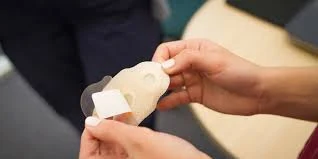First Medical Device Cleared by FDA With Adherence Claim
Patient ingests medication by mouth
Wireless Receiver Applied to arm or abdomen, transmits signal to Smart Device
or other monitor
Micro-chip embedded in Pill
Proteus Digital Health, Inc. today announced that the FDA has expanded the Indications for Use statement for the latest generation of its Ingestible Sensor technology, enabling the device to be used as an aid in the measurement of medication adherence. To the Company’s knowledge, this is the only device with an FDA-sanctioned claim for measuring medication adherence.
“We are delighted that our collaborative work with the FDA continues to enable positive progress”
An estimated 50% of us do not take our medicines as prescribed, potentially limiting the therapeutic effectiveness of our medicine and resulting in $100-300 billion in avoidable healthcare costs in the US alone due to unnecessary escalation of treatment.1 There have been many efforts to address this challenge but no products have previously been cleared by the FDA for aiding in the measurement of adherence until now.
“We are delighted that our collaborative work with the FDA continues to enable positive progress,” said Proteus Co-Founder and Chief Medical Officer Dr. George Savage. “We believe that ingestible devices have the potential to speed clinical trials and improve the real-world effectiveness of medicines in community settings.”
When used with a medication, the Proteus Ingestible Sensor marks actual intake time, a quantifiable event that has allowed regulators to grant the expanded indication to the company. The Ingestible Sensor was approved by the FDA in 2012 and communicates with an adhesive patch, worn on the torso. The Proteus Patch records time of ingestion along with steps, rest and heart rate, and communicates to a mobile app via Bluetooth.
As many players enter the wearables space, Proteus Digital Health is leading a new ingestible category in order to derive unprecedented insights about medication-taking behavior and physiologic response to therapy. Proteus is the only company that combines ingestible, wearable, mobile and cloud computing.
About Proteus Digital Health®
Proteus is creating a new category of therapy: Digital Medicines. Digital Medicine therapy includes drugs that communicate when they’ve been taken, wearable sensors that capture physiologic response, applications that support patient self-care and physician decision making, and data analytics to serve the needs of doctors and health systems. The goal of Digital Medicines is to empower patients and their families, enable physicians and health systems to more effectively manage risk and ensure that outcomes are reliably achieved.
Proteus received FDA market clearance in the United States and a CE mark in Europe for its wearable and Ingestible Sensor devices.








